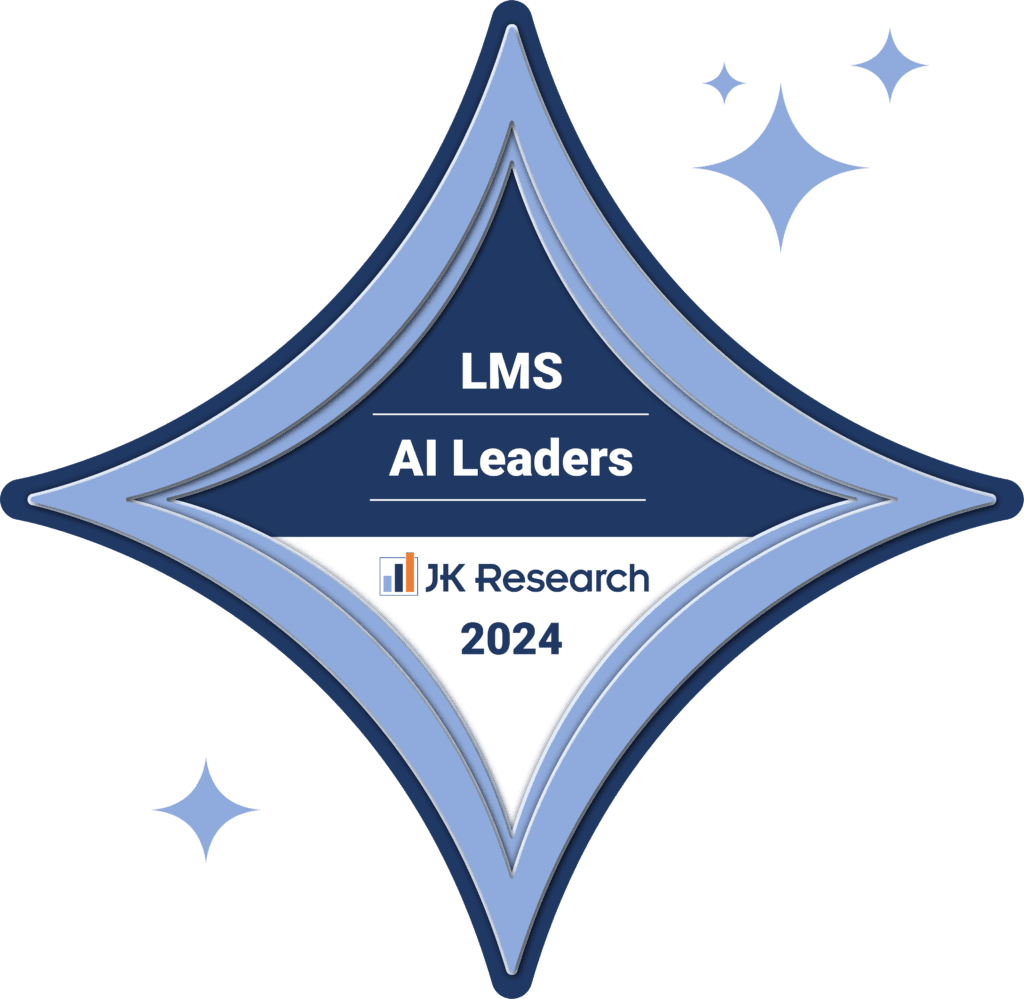So you’ve heard of adaptive learning, but what does it actually mean, and just how beneficial is adaptive learning to your organisation in 2025 and beyond? 🤔
Well, we are here to answer all of your questions and more…
Our guide will break everything down in simple, no-nonsense terms so you can start using adaptive learning to make your training programmes smarter AND more impactful in no time at all! 🚀
AI in L&D
Artificial intelligence is already making waves in the L&D industry, and according to one source, “approximately 34% of organisations are currently using AI and an additional 42% are exploring its applications”.
By promoting efficiency, personalisation, and accessibility, AI and machine learning are really changing the game for employees, and adaptive learning is part of this movement.
So what exactly is Adaptive Learning?
Adaptive learning is a personalised approach to education or training that uses AI to adjust the learning experience based on the unique needs, behaviours, and progress of your learners.
Instead of a one-size-fits-all method, adaptive learning systems tailor content, pace, and feedback to help each individual achieve their goals more effectively.
“AI can automate routine administrative tasks, saving time for educators and trainers. This includes automated marking and attendance tracking, reducing manual workload.”
Handy right?
Getting Started with Adaptive Learning
Step 1: Assess Your Learner Needs and Objectives
Before diving straight into adaptive learning, you need to know what you’re already working with. 🛠️
Find the gaps & look at where your learners are struggling.
Maybe they’re tripping up during onboarding, or their upskilling efforts aren’t sticking?
Identifying these gaps is step one. 📉
Set your goals
Whether it’s boosting learner engagement, levelling up skills, or smoothing out the onboarding process, having clear objectives will keep you on track. 🎯
Group your learners
Not everyone learns the same way.
Segment your audience by role, department, or skill level to make sure you’re tailoring the experience to their needs. 🧩
Check out 15 Key Characteristics of Effective Learning (Definition + Examples)
Step 2: Pick the Right Adaptive Learning Platform
Not all adaptive learning platforms are created equal, so you’ll want to choose carefully. 🤓
Do your homework, and it’ll save you time and money in the long run!
Look for platforms with features like AI personalisation, data analytics, and seamless content integration. 🔍
Our platform is a solid example…
No but seriously…
Thirst adapts to your learners’ progress and preferences, making learning feel more intuitive without you having to do much at all. 🌟
Why not check out our platform 👀
With Thirst you can…
Get answers and inspiration instantly. ✅
Edit or generate content on the fly. ✅
Improve writing and fix grammar. ✅
Leverage our AI-powered autocompletion to keep content flowing. ✅
If this sounds interesting to you…
Step 3: Start Small (Think Pilot Programmes)
Big changes can feel overwhelming to many people, so ease into it with a small-scale test. 💡
Choose a test group
Start with one department or team.
Think of this as your trial run before rolling it out company-wide. 🏗️
Get feedback
Watch how learners engage, track their progress, and tweak as they go.
Their input will help you fine-tune your approach. 🔄
Step 4: Create or Curate Content
Content is king, but you don’t have to reinvent the wheel. 👑
Use what you’ve got
Have existing training materials?
Great!
Start by integrating those into your new system. 📚
Let AI lend a hand
Many adaptive platforms can create or suggest content that bridges knowledge gaps. It’s like having a little helper in the background tailoring lessons to your team’s needs. 🤖
Step 5: Lean on Data and Analytics
One of the biggest perks of adaptive learning is the treasure trove of insights you’ll get. 💎
Monitor progress in real-time
See how learners are engaging, what they’re struggling with, and where they’re excelling. 📈
Keep improving
Use this data to refine your content and adjust learning paths. It’s all about getting better over time. 🔧
Get the Most Out of Your L&D with Deep Data Insights and Analytics
Step 6: Get Stakeholder Buy-In
You’ll need the right people on board to make adaptive learning a success. 🤝
Loop in the key players
HR, L&D teams, and department heads are your allies here. Get their support early. 🗣️
Sell the benefits
Show them how adaptive learning boosts engagement retention and (let’s be honest) saves money in the long run. (Very important to those holding the purse strings!). 💰
Step 7: Train and Support Your People
Even the best platform won’t work if people don’t know how to use it. 🧠
Train instructors
Make sure your L&D team or trainers are comfortable with the new tools. 🎓
Support your learners
Give employees tips and guidance so they feel confident navigating the system. 🛟
Step 8: Measure, Improve, Repeat
The journey doesn’t stop after launch, it’s all about staying adaptable (pun intended). 🔄
Track success metrics
Pay attention to things like engagement rates, course completion, and overall learning impact. 📊
Keep refining
Use the data and learner feedback to tweak and optimise your programme. Adaptive learning is a process, not a one-and-done deal. 🔂
Why Adaptive Learning Matters
At its core, adaptive learning is about making education smarter whilst saving your business time and money.
It meets learners where they are, gives them what they need, and keeps things engaging.💡
Whether you’re onboarding new hires or upskilling a seasoned pro, adaptive learning can help you create a learning programme that really works. ✅
Let Thirst handle all of your adaptive learning needs in 2025!
Thirst uses advanced algorithms and machine learning to tailor content recommendations dynamically, ensuring that your learners receive relevant materials in the formats they prefer, whether that be videos, articles, or interactive modules.
Our platform also enables “learning in the flow,” by integrating training with daily work tasks to enhance overall productivity and skill application.
It also empowers Learning & Development teams with data-driven insights, enabling effective competency assessments and skill gap analysis.
And if that wasn’t all!
More key features include real-time recommendations, self-paced learning options, and social collaboration tools that encourage knowledge sharing and teamwork!
Got 2 Minutes?
If your organisation is struggling with disengaged learners, Thirst has the solution.🔥
Thirst is an AI-powered learning platform that helps L&D teams of all sizes boost learner engagement and create experiences tailored to today’s learners.
Take a guided tour today and see Thirst in action.
For more e-learning insights, resources and information, discover the Thirst blog.
You may also enjoy:
13 Of The Best Coaching Models to Use | What are Knowledge Silos? (Plus Tips to Overcome Them) | 24 Examples of Employee Strengths and How to Develop Them







